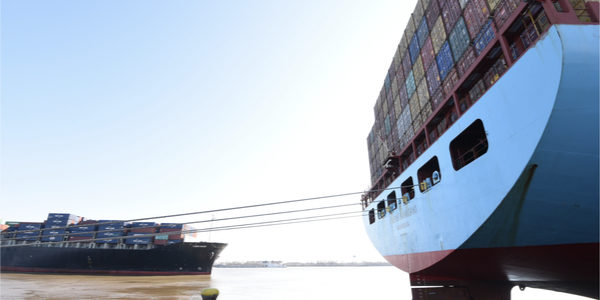Ports report mixed results for 2019

Cargo volume dipped at the Ports of Oakland and Los Angeles in 2019, but officials at the Port of New Orleans reported record levels for the year, according to annual reports released this month. Despite the mixed bag, port officials remain optimistic for 2020.
Record levels at Port NOLA
Last year was a record-setter for the Port of New Orleans (Port NOLA), which moved 648,538 twenty-foot equivalent units (TEUs), a 10% increase over 2018, officials said. It was the second straight year of double-digit growth at the port; growth was primarily driven by the Panama Canal expansion, the region's petrochemical exports, and a growing market for imports, officials also said.
"Additionally, these record container numbers are balanced by significant loaded import growth, up 12% in 2019," according to Brandy D. Christian, president and CEO of Port NOLA and CEO of the New Orleans Public Belt Railroad Corporation (NOPB).
The recent growth is driving a $100 million port expansion project that includes the purchase of four 100-foot-gauge container gantry cranes and other enhancements to the container terminal. The cranes are expected to be operational by the middle of next year, officials said.
"This investment will add significant capacity to the Napoleon Avenue Container Terminal and allows the port to work larger ships more efficiently," officials said in a statement announcing the yearly cargo volume numbers.
Intermodal growth at Port NOLA was up 20% in 2019.
Near-record levels in L.A.
The Port of Los Angeles moved 9.337 million TEUs in 2019, down 1.28% compared to 2018 and just shy of 2017's second-best year on record, when the port moved 9.343 million TEUs. Officials pointed to lagging exports and trade tensions as reasons for the decline.
"In the face of lagging exports due to international trade tensions and tariff uncertainties, the Port of Los Angeles has maintained strong momentum and kept cargo flowing," Executive Director Gene Seroka said in a January 16 statement. "This feat was only possible because of the extensive cooperation and continued efficiency improvements by our terminal operators, supply chain partners, and longshore workforce."
In 2020, Seroka said the port will take on several initiatives focused on efficiency, labor, and technology while continuing to advance its Clean Air Action Plan and its pursuit of zero-emission technology. The port is currently testing 78 zero-emission drayage trucks and 74 zero-emission yard tractors, and is also working with partners to test eight new zero-emission top handlers in the coming year. More projects are on tap for 2020, including a new large-scale zero-emission drayage truck project testing a fleet of 50-100 zero-emission trucks, port officials said.
Volume dips in Oakland
At the Port of Oakland, 2019 container volume slipped 1.8% due to fewer empty containers, but officials said loaded import and export containers were at a record high.
The port handled 2.5 million TEUs last year compared to 2.55 million in 2018, due to a 13% drop in empty container handling. Export volume increased 3.7% and imports were up 1%. As a result, officials said the port set a record for loaded containers in 2019, with 1.9 million TEUs.
"We're encouraged that our loaded imports and exports set annual records," Port of Oakland Maritime Director John Driscoll said in a January 17 statement. "We are looking to improve on this cargo performance in the coming year, especially if the U.S. and China can continue to break down trade barriers."
Export volume growth was due to continued demand for U.S. agricultural products and the strong consumer economy kept import volume growing, officials said.
Related Articles
Copyright ©2024. All Rights ReservedDesign, CMS, Hosting & Web Development :: ePublishing